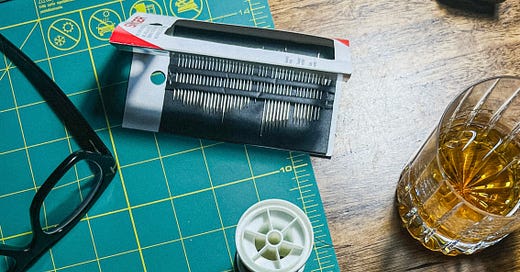Growing up, we didn’t have a lot of money. We weren’t poor by any means, but early on, I learned to repair instead of replace out of necessity more than out of philosophy.
These days, it’s a particularly satisfying activity that’s as much ethos as it is pragmatism. Giving something a second lease rather than discarding it at the first sign of decay adds a certain kind of nuance to the sense of ownership you have of it. As if it's now more than it was when it came to you, even when the signs of use and repair are still visible.
This also bleeds over into the ethos of diligent maintenance of your things even before the inevitable signs of wear begin to appear. It's not so much about preventing the wear; it's about caring for the things in such a way that the inevitable signature of use bears the tone of a tool used by expert hands over time rather than a commodity that is used indiscriminately and bears the scars of disregard as a result. The word for this signature is patina, but I do my best to avoid that term as it has come to mean far less than it used to.
This ethos also naturally flows into a discussion of the front end of your relationship with the things you own - that in knowing the manner in which you'll use something and the longevity that this "care ethos" predicts, you would only invest in items of a quality sufficient to meet the challenge that your ethos presents, and as such, the price you're willing to pay for an item is higher, even disproportionate to your means at times.
There are those who have elevated this ethos to an art form, building careers and reputations on their ability to resurrect the dead. I am certainly nowhere near that, but that doesn't mean that stitching the occasional torn cashmere, restoring an old pair of boots, or scouring the odd estate sale for hidden treasures isn't any less satisfying of a way to spend a Saturday afternoon.



